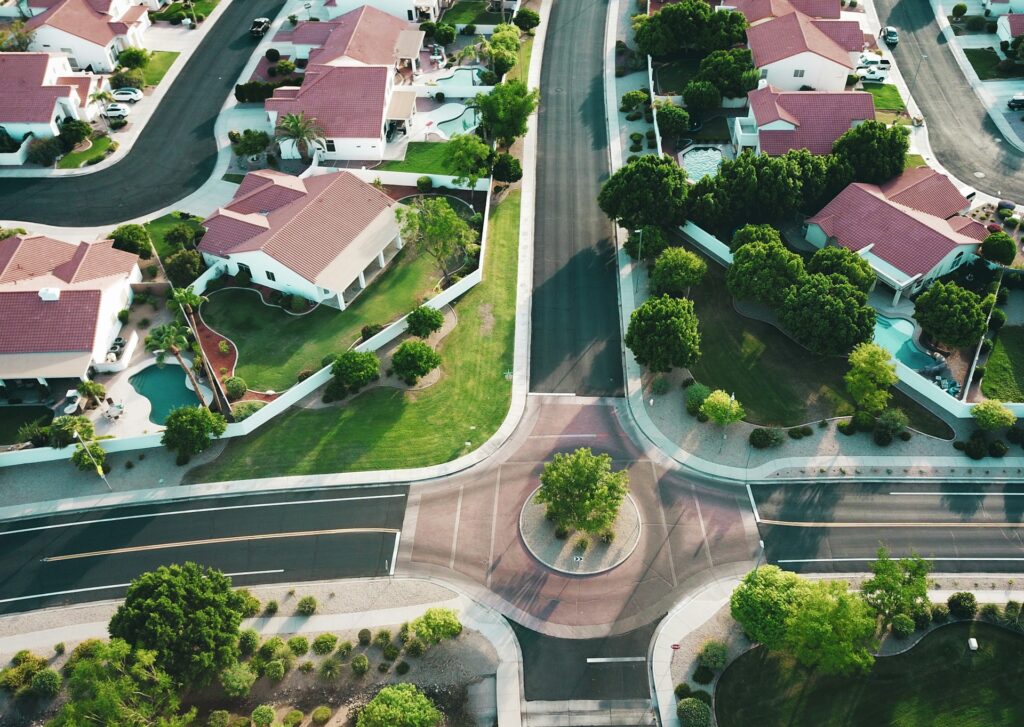Every day, Homeowners Associations (HOAs) have to figure out how best to use funds for regular costs like upkeep, keeping the lights on, and making sure everyone’s safe. But sometimes, things come up that no one planned for. That’s when the HOA reserve budget is a real lifesaver—it’s there to cover surprise expenses or big projects down the road that keep everything running smoothly and looking good.
It plans for a rainy day so that later on, whether fixing roofs or updating the pool area, there’s money already set aside. It keeps the community standing strong and staying beautiful.
In this article, we’re going into detail about this special part of an HOA budget: the reserves. We’ll show you why it matters just as much as what we spend day-to-day in keeping the neighborhood a nice place to live.
In this article:
- The ABCs of HOA Budgets: Operational and Reserve Insights
- What are the Best HOA Reserve Strategies?
- Best Strategies for HOA Budget Success
- Handy Tools and a Straightforward Guide to Your Reserve Budget
- Conclusion
The ABCs of HOA Budgets: Operational and Reserve Insights
Managing the money matters of a homeowner’s association (HOA) can be quite involved, but understanding various budget types is key for keeping your community in good shape for years to come.
Let’s unpack HOA budgets and look closely at operational funds alongside the vital reserve budget—highlighting their specific functions and why they’re strategically important.
Understanding the Essentials: Operational vs. Reserve Funds
Before we dive into percentages and strategic allocations, let’s clarify what we’re dealing with. HOA budgets primarily consist of two parts: the operating budget and the reserve fund. Each serves a unique purpose and covers different expenses your community might face.
Operating Budget
This is the day-to-day lifeblood of the HOA, covering ongoing expenses such as:
- Landscaping
- Utilities
- Maintenance of communal areas
- Administrative costs
These expenses are predictable and recurring, making them easier to anticipate and budget for annually.
Reserve Fund
Think of the reserve as your community’s savings account, set aside for future, non-routine expenses. This fund is essential for covering the cost of major repairs or replacements of community assets, like roofs, pavement, or pool refurbishment.
Unlike the operating budget, reserve funds are not for everyday expenses but rather for ensuring the community can afford necessary large-scale projects without financial strain.
Navigating Allocations: How Much Goes Where?
When it comes to dividing your HOA dues between the operational budget and the reserve fund, there’s no universal blueprint to follow. The split will be heavily influenced by the community’s immediate needs, the lifespan of its assets, and the strategic vision for its development.
However, despite these variables, a principle of prudent financial planning emerges.
Typical Allocation Practices: A Closer Look
A well-managed HOA recognizes the importance of robust reserve funding. While operational expenses cater to the daily functionality of the community, reserves ensure its future security and sustainability.
As a rule of thumb, it’s generally advised that HOAs aim for their reserves to be at least 70% funded. This benchmark suggests that 70% of the total anticipated costs for repairing, replacing, or maintaining major assets over the long term should be available in reserve funds.
This 70% target isn’t arbitrary. It’s grounded in a practical approach to risk management. Fully funded reserves (100%) offer the highest level of security but might require higher dues or special assessments that could burden homeowners.
Conversely, a reserve level significantly below 70% signals a riskier stance, potentially leading to financial shortfalls when significant repairs or replacements become necessary.
To navigate these allocations effectively, HOAs should:
- Conduct Regular Reserve Studies: These studies evaluate the condition and repair/replacement timelines of major community assets, providing a roadmap for reserve funding.
- Adjust Dues Accordingly: Based on the findings of reserve studies, HOAs might need to adjust their dues to meet the 70% funding goal without imposing undue financial stress on the members.
- Plan for the Unexpected: While the 70% guideline serves as a solid foundation, it’s also crucial to remain flexible and adjust to unforeseen circumstances, ensuring the community’s needs are always met.
What Can Reserve Funds Be Used For?
It’s essential to understand the limitations and intended use of reserve funds. These funds are earmarked for the repair, replacement, or restoration of existing community assets.
They are not to be used for operating expenses or the creation of new amenities, which should be funded through the operating budget or special assessments. Examples of reserve fund uses include:
- Roof replacement
- Upgrading community facilities such as intercoms
- Renewing security system software
- Street and sidewalk repairs
- Replacement of existing and outdated access control systems
Creating a clear distinction between these funds not only ensures financial stability but also promotes transparency and trust within the community.
The Golden Rule: No New Creations
A critical aspect of managing reserve funds is the principle that they cannot be used to finance new projects. The reserve is strictly for maintaining and preserving what already exists, ensuring that the community remains a desirable place to live without overextending its financial resources.
What Are the Best HOA Reserve Strategies?

Image: Unsplash
Successfully managing HOA responsibilities involves not just the day-to-day upkeep of the community but also planning for its future. This foresight is where reserve funds play an indispensable role.
Let’s navigate through the landscape of reserve requirements, contributions, and the strategic allocation of your HOA’s budget to ensure financial resilience and stability.
Legal and Recommended Reserve Requirements
Understanding the legal landscape and recommended practices for reserve funding is the first step in securing your community’s financial future.
State-Specific Guidelines
Many states have specific statutes governing HOA reserve funds, outlining minimum requirements for reserve studies and funding levels.
It’s crucial to familiarize yourself with these regulations to ensure compliance and protect your community from financial risks.
Best Practices
Even in the absence of strict legal requirements, following industry best practices—such as conducting biennial reserve studies and maintaining a funding level at or above 70%—is advisable.
These practices help HOAs anticipate and prepare for future expenses, avoiding the need for significant special assessments.
Typical Contributions: Finding the Sweet Spot
How much of the HOA’s budget should feed into the reserves? While this can vary, understanding typical contributions can guide your strategy.
A significant portion of your budget should bolster the reserve fund, with many successful HOAs allocating between 15% to 40% of their annual dues to reserves. This range ensures that while current operational needs are met, the future of the community is also secured.
Best Strategies for HOA Budget Success
Navigating the financial waters of HOA management requires a blend of strategic planning and foresight. A common query many HOAs face is whether reserve funds can be tapped into to cover unexpected budget shortfalls.
Let’s delve into this topic and explore how to maintain a healthy financial equilibrium between immediate operational needs and long-term reserve savings.
Reserve Funds: A Safety Net with Boundaries
While reserve funds offer a financial safety net, they are primarily intended for future capital expenses and should not be routinely used to cover operational shortfalls.
This practice, although tempting, can jeopardize the community’s financial health and lead to underfunded reserves, making it difficult to address significant repairs or replacements without imposing hefty assessments on homeowners.
Exceptions exist, but they require careful consideration, transparent communication with community members, and, often, legal consultation.
Balancing Act: Operational Budget and Reserve Savings
Achieving a balance involves:
- Forecasting with Precision: Regularly conduct reserve studies to forecast future expenses accurately. This proactive approach helps in setting realistic budgetary allocations.
- Flexible Planning: Adapt your budgeting strategy as community needs evolve, ensuring both operational and reserve funds are adequately maintained.
- Open Dialogue: Engage the community in financial decisions, especially when considering the use of reserve funds for unexpected operational costs.
Handy Tools and a Straightforward Guide to Your Reserve Budget
Keeping your HOA’s finances in check doesn’t have to be a headache. With a few smart tools and a clear, step-by-step approach, you can craft a reserve budget that not only meets your community’s needs but also sets you up for long-term success.
Let’s break it down into more approachable steps and tools you can start using today.
Embracing Tools for Smoother Financial Management
Start by tapping into the power of HOA reserve tracking and Excel budget templates. These nifty tools help you:
- Keep an Eye on Reserves: Easily track how much you’re setting aside and spending from your reserve fund.
- Easily Plan Ahead: Use templates to predict future costs, ensuring no surprise expenses catch you off guard.
Building Your Reserve Budget: A Guide
Here’s how to start building your unique reserve budget:
- Kick Off with a Reserve Study: Bring in a pro to assess what your community will need now and down the line. It’s like having a financial crystal ball.
- Set Your Savings Targets: Using insights from the study, figure out how much you need to tuck away to keep your community humming along smoothly.
- Chart Your Saving Path: Decide how much of your annual budget should feed into your reserves. It’s all about finding that sweet spot between today’s needs and tomorrow’s plans.
- Track Your Progress: With your Excel template in hand, keep tabs on how you’re doing against your goals. Think of it as your financial fitness tracker.
- Check-in and Adjust: Life changes, and so will your community’s needs. Make it a point to revisit your budget regularly, tweaking it as necessary to stay aligned with your community’s heartbeat.
When breaking down the process into these digestible steps and using straightforward tools, creating an effective HOA reserve budget becomes less of a task and more of a smart strategy for community well-being and financial health.
Conclusion
Our deep dive into the essentials of managing an HOA reserve budget has highlighted how crucial a well-maintained fund is for keeping community assets secure and thriving over time.
Strategic HOA reserve budgeting is about carefully planning today to safeguard tomorrow, and staying ahead with smart financial strategies that align with legal guidelines.
We urge those on HOA boards and property managers alike to adopt a forward-thinking approach when it comes to finances. Anticipate what your community will need down the line so you can prepare properly now.
To enhance this process, consider integrating solutions like Proptia’s HOA residential suite and security hardware systems into your financial operations. This kind of technology can simplify budget management seamlessly while supporting superior living standards in your neighborhood.
Choosing tools from Proptia means investing wisely in your community’s legacy. Here, advanced protection goes hand-in-hand with ease of use.

